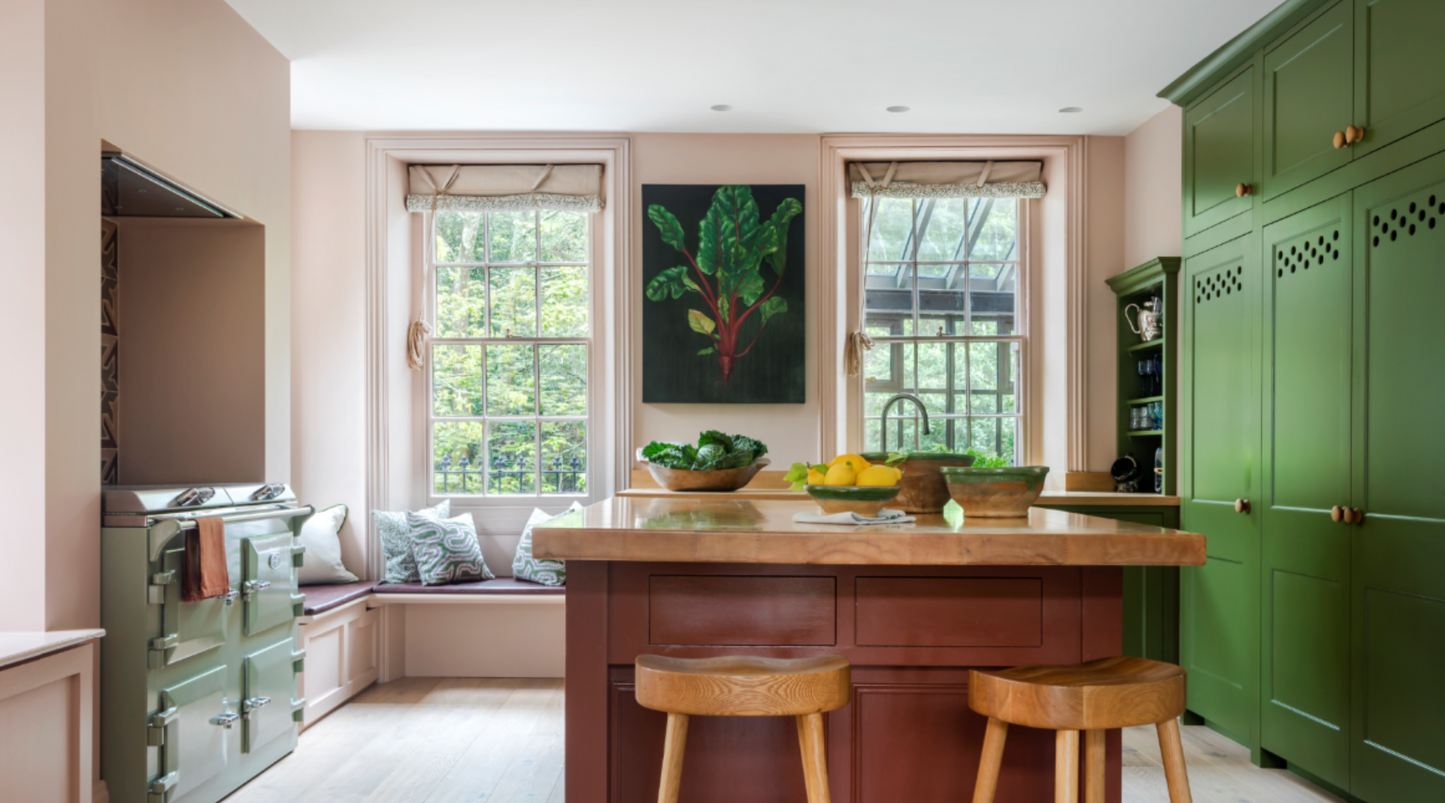
We are delighted to have Bryony Richardson share her insights on sustainability within interior design. Bryony describes herself as a 'light and colour consultant' and her projects to date reflect her talent in creating flowing spaces that work with the natural features of the exisiting space. It’s perhaps not surprising to learn that Bryony grew up in an artistic household. ‘My mum was an interior decorator and my dad was a keen antiques collector, so our home was filled with extraordinary and wonderful objects,’ she says. As a designer, she always aims to create spaces that inspire and delight.
1. What sustainable practices do you incorporate into your interior design projects?
Where possible I try to reinvigorate and reimagine elements of a client's existing scheme. This might be wooden flooring in need of some specialist reconditioning or furniture in need of re-upholstery.
2. How do you select eco-friendly materials and products for your designs?
I always try to go for completely natural materials but it's also worth considering the durability of a product. Polypropylene carpet for example really goes against my grain but a product like Unnatural Flooring - a washable sisal - is potentially a good and sustainable option in the long run because it's going to last for a lifetime. As much as I love natural sisal products, I would never specify them in a house with children or animals because they get irreparably stained pretty easily and will need replacing.
In a recent project the majority of the flooring and tiles were reclaimed. Magically age softened encaustic tiles and charmingly battered terracotta slips. I don't think you can beat the instant sense of "like it's always been here" you get from using reclaimed materials. The kitchen was a reconditioned bespoke kitchen from another property which now looks beyond amazing after some TLC from a skilled carpenter. We also installed an Everhot Stove which heated the large family room entirely from their solar cells.
3. What steps do you take to minimize waste during the design and renovation process?
Careful measuring and ensuring the trades are fully in the loop so there are fewer surprises/mistakes.
4. How do you balance sustainability with aesthetic and functional requirements in your projects?
I genuinely don't see this as a hard balance as I find that some reclaimed items are often of a higher quality and more reasonably priced than equivalent, brand new items.
5. What certifications or standards do you look for in sustainable furnishings and materials?
I always love a BCORP sign but I am also aware that there are a large number of excellent and sustainable businesses out there that are not yet of scale to have official certifications. I tend to pick up a phone and talk to the manufacturers before placing substantial orders anywhere to make sure our ethos's are aligned
6. How do you educate your clients about the benefits of sustainable design choices?
I think a story is the best place to start. Letting people know that their buying power is helping make the world a better place even in some minute way can help influence decisions.
7. What advice would you give to homeowners who want to make their interiors more sustainable?
Try to look at what you've already got with fresh eyes and how you can improve on that rather than automatically assume you need to rip out and replace.
8. What steps do you take to minimise waste during the design and renovation process?
Careful measuring and ensuring the trades are fully in the loop so there are fewer surprises/mistakes. I also try to avoid "fashionable" design directions and veer towards highly personalised and classic interiors, thereby ensuring a longer gap until the next renovation!



